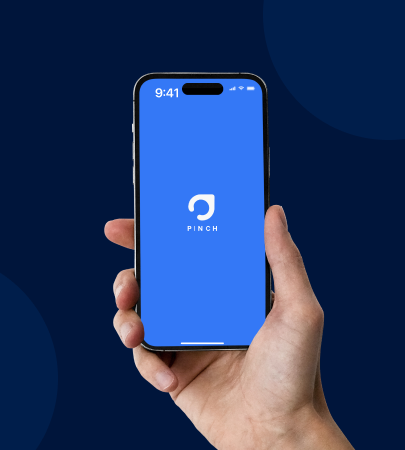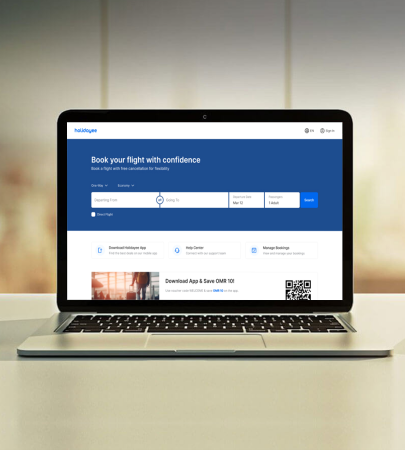Conducting a Comprehensive UX Audit for Digital Products
Successful products and services are not only visually appealing to your audience but are also highly tailored to users’ needs. Using UX expert analysis based on widely renowned usability.

Ready-to-go services to get your product to market, fast

3-4 Hours
Quick Ideas Validation
Visualize your problem & get an insight into all we need to know before building the actual product.

1st Week
Design Sprint
Answer critical business questions & get your product to market via design, prototyping, and testing ideas with users.

2nd Week
Solution Discovery
Define your product development roadmap by locking requirements, features, deliverables, & costs to ensure success.

3-5 Months
Rapid Prototyping
An interactive set of UI/UX designs or Hi-Hi mock-ups to help you understand and visualize the end product.
LET’S TALK
10 years of building digital products and we are just getting started!
UX services for every stage of product development
We’re able to take full end-to-end ownership or solve a specific problem in your project. Whether you need to craft an idea for a completely new product or elevate the quality of an existing solution, we’ll help you to create a product that is laser targeted to your users’ needs and delivers business results.
Discovery
Collaborate with our design team to uncover valuable insights.
Product Research
We dive deep into your users’ behavior and your business environment
UX & UI Design
Translate business needs into powerful solutions and design
Branding
Design a consistent language to communicate
FEATURED WORK
Discover how we turn visions into digital success for leading brands and startups
 Mobile logistics
Mobile logistics
Pinch App
Pinch App leads you to captivating spots, ensuring memorable adventures amidst secluded mountains and beaches.
 Website
Website
The Body Shop
Discover a world of beauty with The Body Shop's e-commerce platform. Offering cosmetics, skincare, and perfumes.
 Website
Website
Numbers Om
Browse and purchase registered car numbers with ease, transforming your vehicle into a personalized statement on the road.
 Mobile Logistic
Mobile Logistic
Holidayee
Explore endless destinations, and book online ticketing platforms for hassle-free travel planning. flights, hotels, and activities all in one place.
Find a digital product design solution for every stage of your business development
A dedicated product design team can help you achieve your business goals. Whether you need to craft an idea for a completely new product or evaluate the quality of an existing solution, we’ll help you to deliver a stunning, usable product that is laser targeted to your users’ needs.
Discovery
Collaborate with our design team to uncover valuable insights that will enable you to connect the users and market to your business perspective and understand what the desired product value is.
Product Research
We dive deep into your users’ behavior and your business environment to make intelligent decisions on the most effective next steps for your business.
UX & UI Design
Translate business needs into powerful solutions and design seamless user interfaces that will help you fulfill your strategy and goals.
Branding
Design a consistent language to communicate with your clients and create an emotional connection between your customers and your brand.
Cost
Time
Quality
Scope
- Hourly
- Flexible
- Top Notch
- Flexible & Evolving
- Per Project
- Fixed
- Top Notch
- Fixed & Clear
- Hourly / Per Project
- Flexible
- Top Notch
- Flexible / Fixed
- What are design systems?
- Style guide vs design system?
- What should a design system include?
- How to choose an agency?
- Why design systems mean success
- Who can build a design system
- How to create design system?
Style guide vs design system?
A design system is essentially a collection of guidelines, principles, and repeatable components that form a company’s definitive approach to designing and building digital products. When multiple teams work on different parts of a product, or entirely different products, inconsistencies in the look and behaviour of these products become inevitable over time. The adoption of a design system aims to solve this by allowing teams to create better digital products that provide users with a consistent visual and interactive experience across the whole suite.
As well as enhancing the end-user experience, the building blocks and standards in a good design system also substantially improve the lives of design and development teams, delivering a range of efficiency and productivity benefits.
Style guide vs design system?
A design system is essentially a collection of guidelines, principles, and repeatable components that form a company’s definitive approach to designing and building digital products. When multiple teams work on different parts of a product, or entirely different products, inconsistencies in the look and behaviour of these products become inevitable over time. The adoption of a design system aims to solve this by allowing teams to create better digital products that provide users with a consistent visual and interactive experience across the whole suite.
As well as enhancing the end-user experience, the building blocks and standards in a good design system also substantially improve the lives of design and development teams, delivering a range of efficiency and productivity benefits.
What should a design system include?
A design system is essentially a collection of guidelines, principles, and repeatable components that form a company’s definitive approach to designing and building digital products. When multiple teams work on different parts of a product, or entirely different products, inconsistencies in the look and behaviour of these products become inevitable over time. The adoption of a design system aims to solve this by allowing teams to create better digital products that provide users with a consistent visual and interactive experience across the whole suite.
As well as enhancing the end-user experience, the building blocks and standards in a good design system also substantially improve the lives of design and development teams, delivering a range of efficiency and productivity benefits.
What should a design system include?
A design system is essentially a collection of guidelines, principles, and repeatable components that form a company’s definitive approach to designing and building digital products. When multiple teams work on different parts of a product, or entirely different products, inconsistencies in the look and behaviour of these products become inevitable over time. The adoption of a design system aims to solve this by allowing teams to create better digital products that provide users with a consistent visual and interactive experience across the whole suite.
As well as enhancing the end-user experience, the building blocks and standards in a good design system also substantially improve the lives of design and development teams, delivering a range of efficiency and productivity benefits.
What should a design system include?
A design system is essentially a collection of guidelines, principles, and repeatable components that form a company’s definitive approach to designing and building digital products. When multiple teams work on different parts of a product, or entirely different products, inconsistencies in the look and behaviour of these products become inevitable over time. The adoption of a design system aims to solve this by allowing teams to create better digital products that provide users with a consistent visual and interactive experience across the whole suite.
As well as enhancing the end-user experience, the building blocks and standards in a good design system also substantially improve the lives of design and development teams, delivering a range of efficiency and productivity benefits.
What should a design system include?
A design system is essentially a collection of guidelines, principles, and repeatable components that form a company’s definitive approach to designing and building digital products. When multiple teams work on different parts of a product, or entirely different products, inconsistencies in the look and behaviour of these products become inevitable over time. The adoption of a design system aims to solve this by allowing teams to create better digital products that provide users with a consistent visual and interactive experience across the whole suite.
As well as enhancing the end-user experience, the building blocks and standards in a good design system also substantially improve the lives of design and development teams, delivering a range of efficiency and productivity benefits.
What should a design system include?
A design system is essentially a collection of guidelines, principles, and repeatable components that form a company’s definitive approach to designing and building digital products. When multiple teams work on different parts of a product, or entirely different products, inconsistencies in the look and behaviour of these products become inevitable over time. The adoption of a design system aims to solve this by allowing teams to create better digital products that provide users with a consistent visual and interactive experience across the whole suite.
As well as enhancing the end-user experience, the building blocks and standards in a good design system also substantially improve the lives of design and development teams, delivering a range of efficiency and productivity benefits.